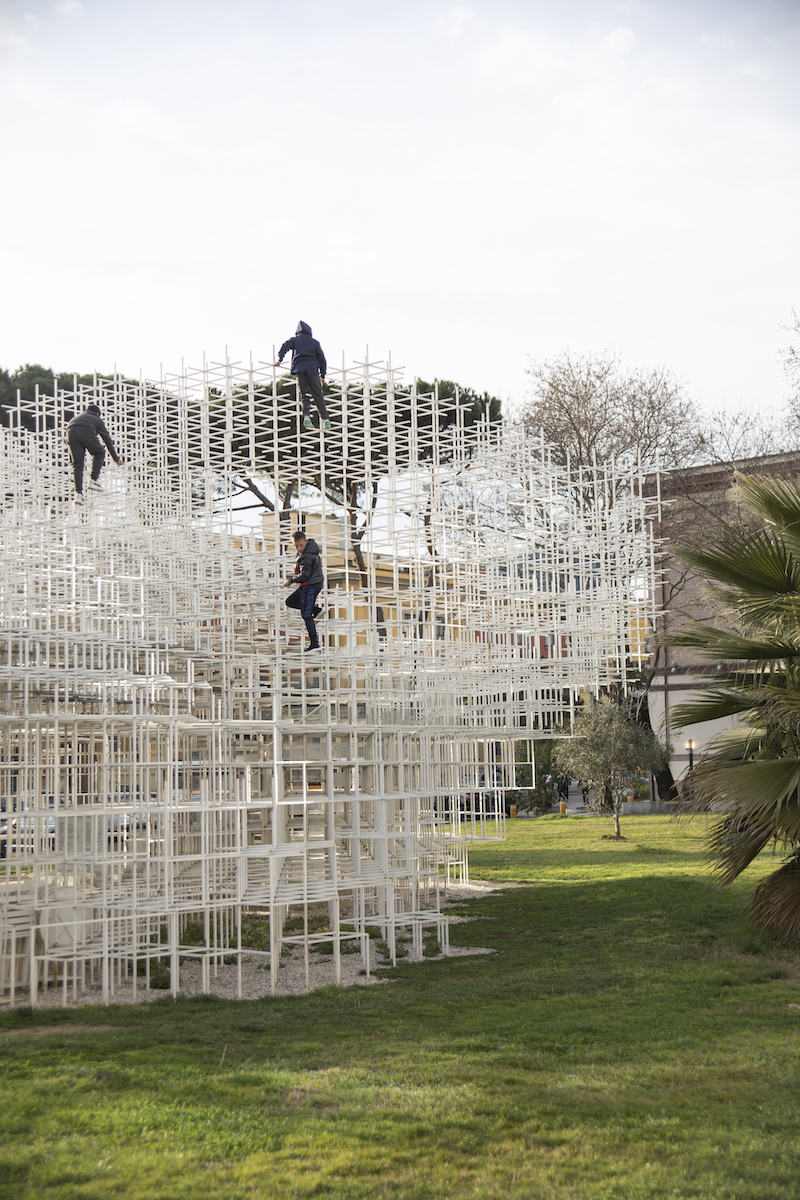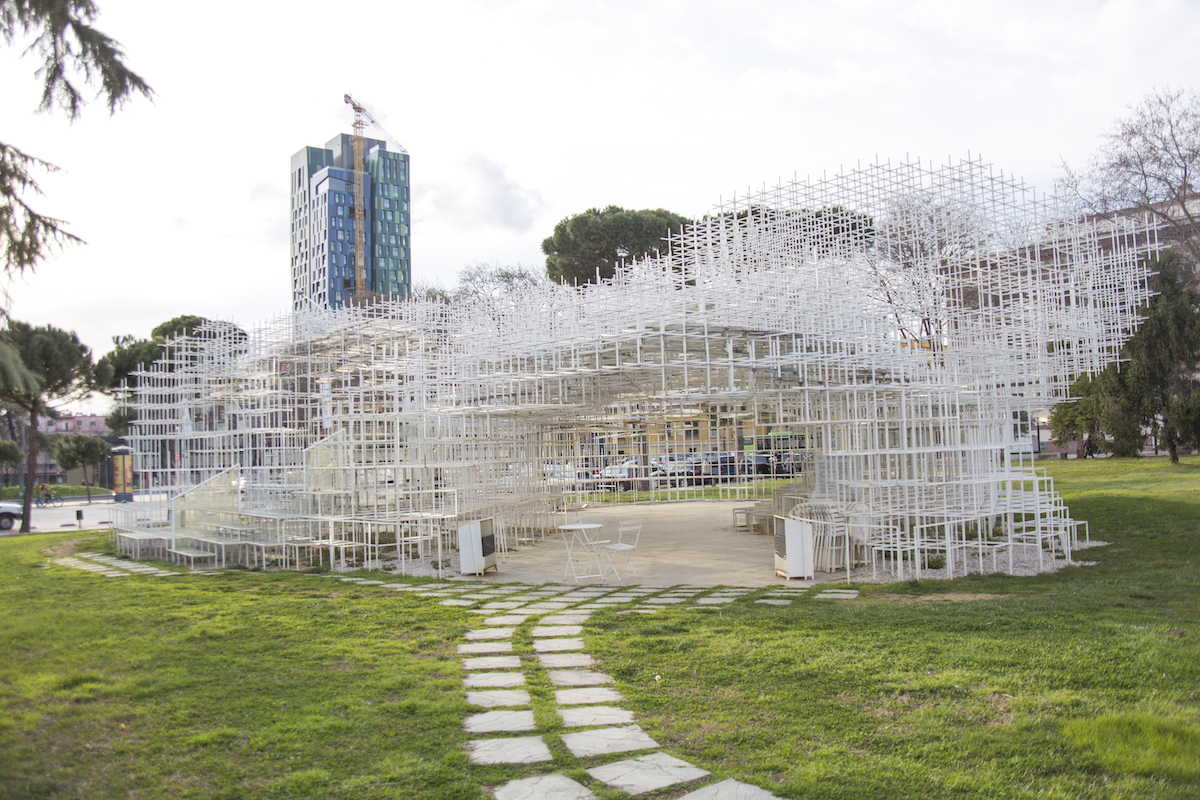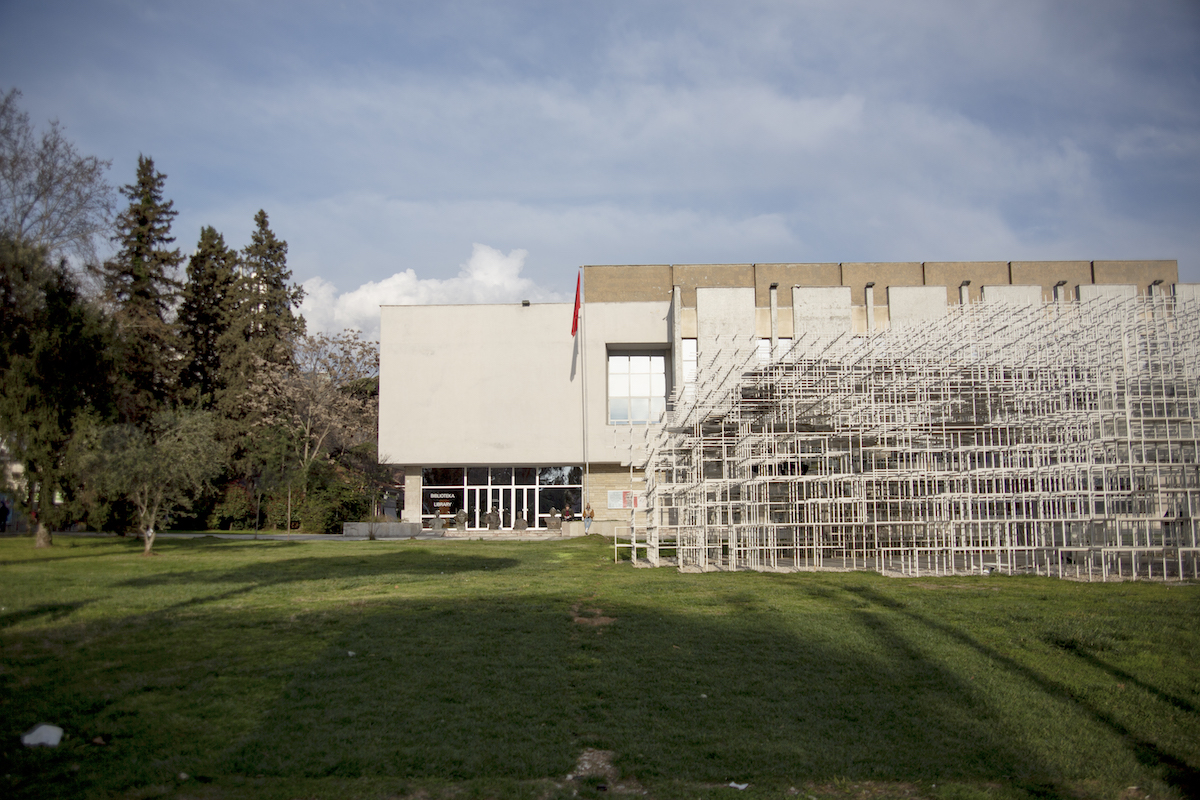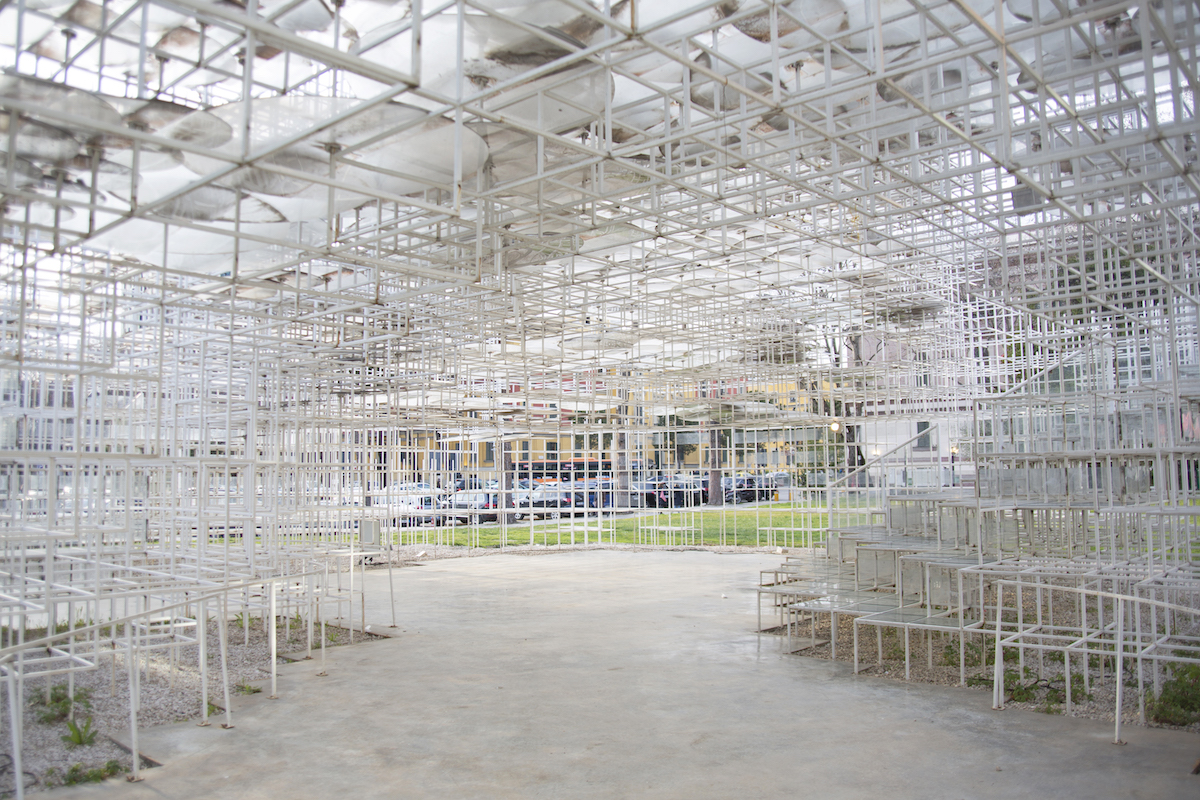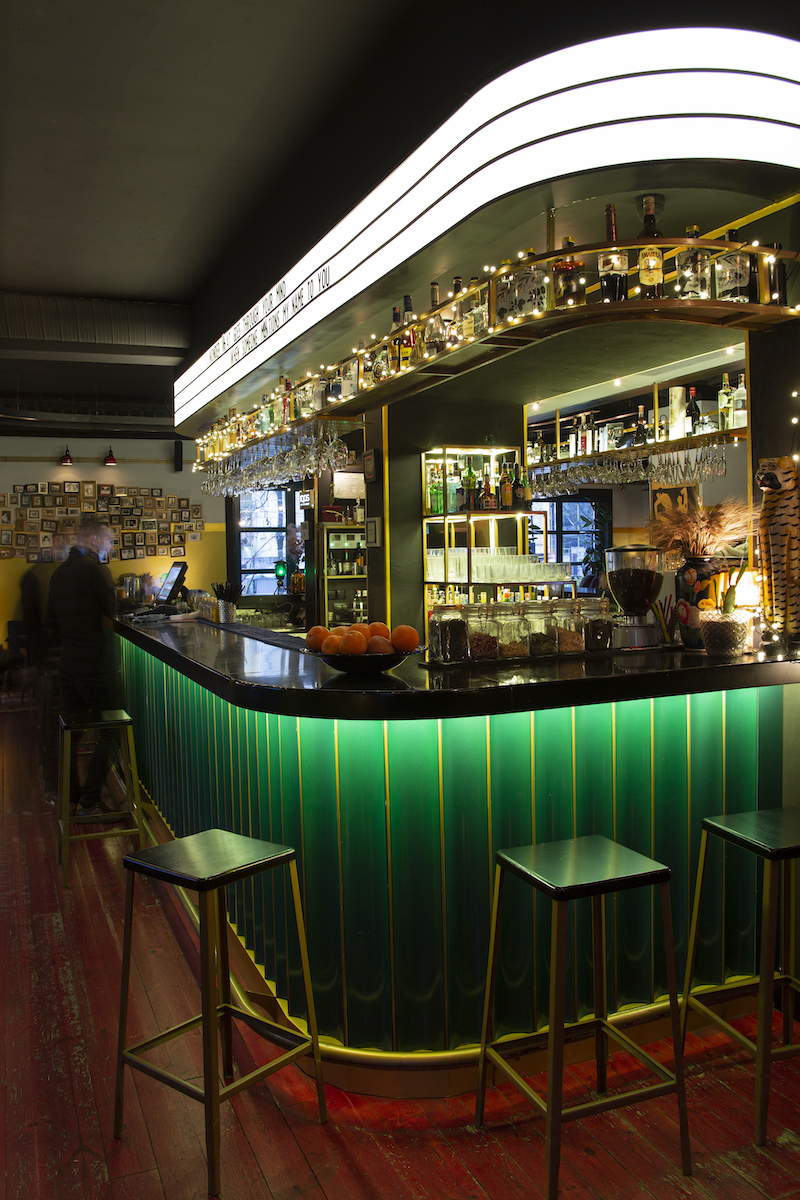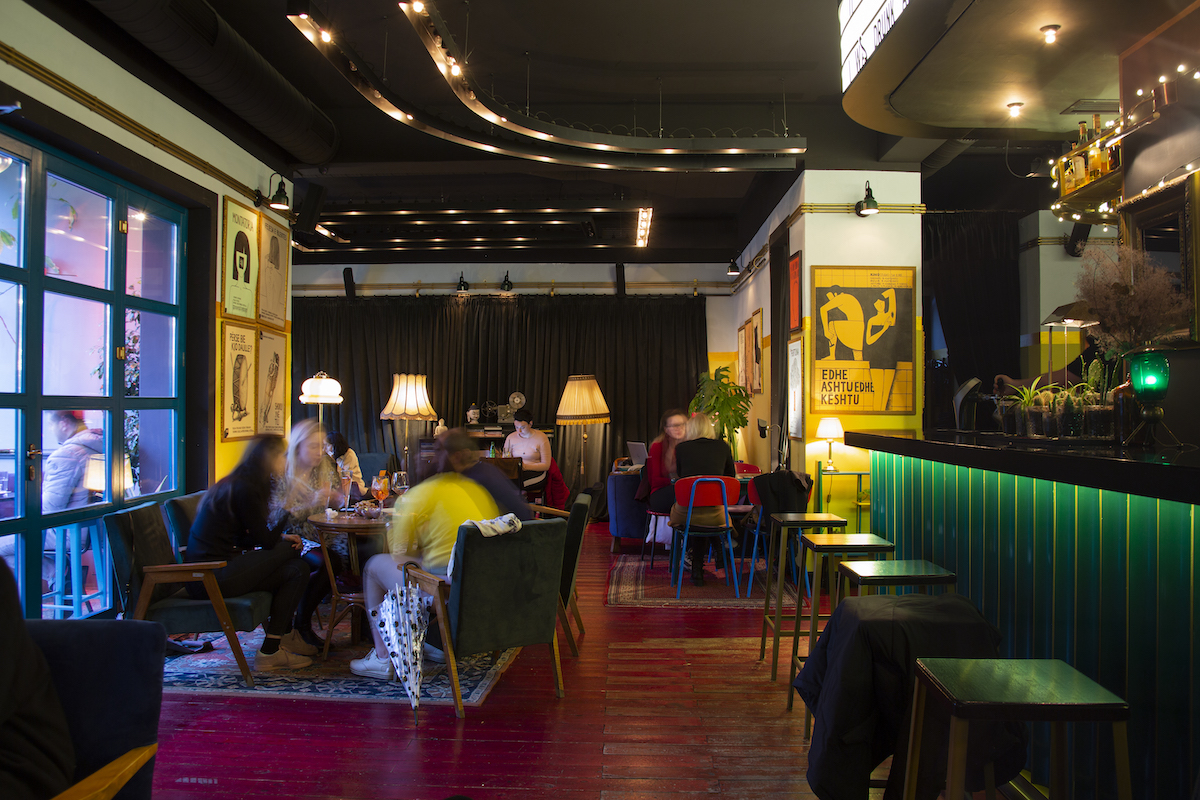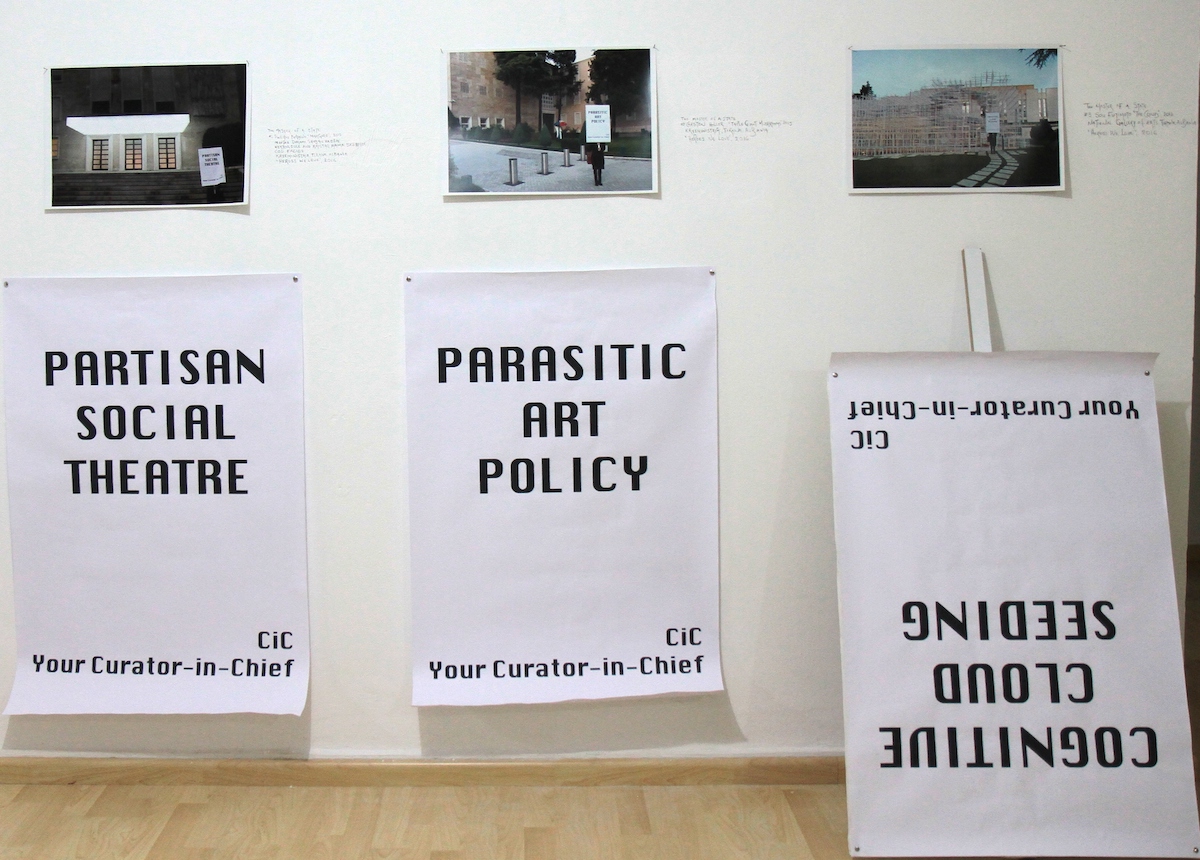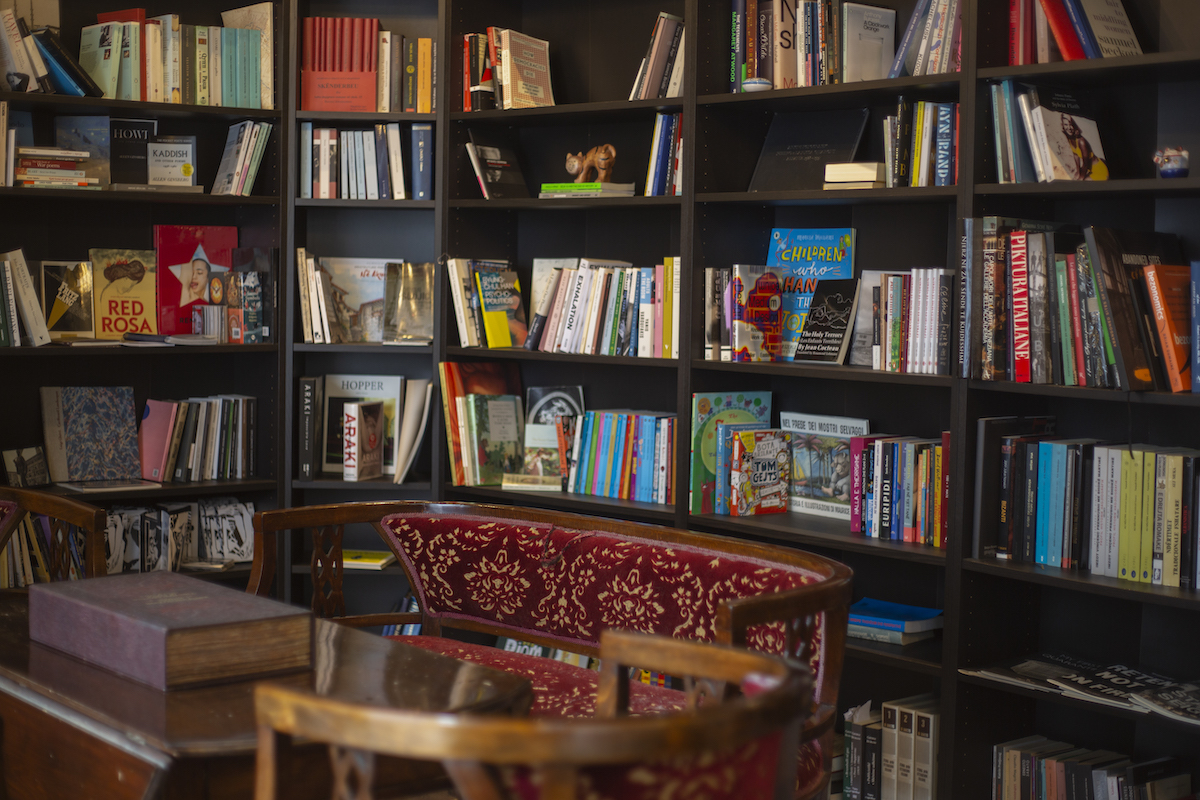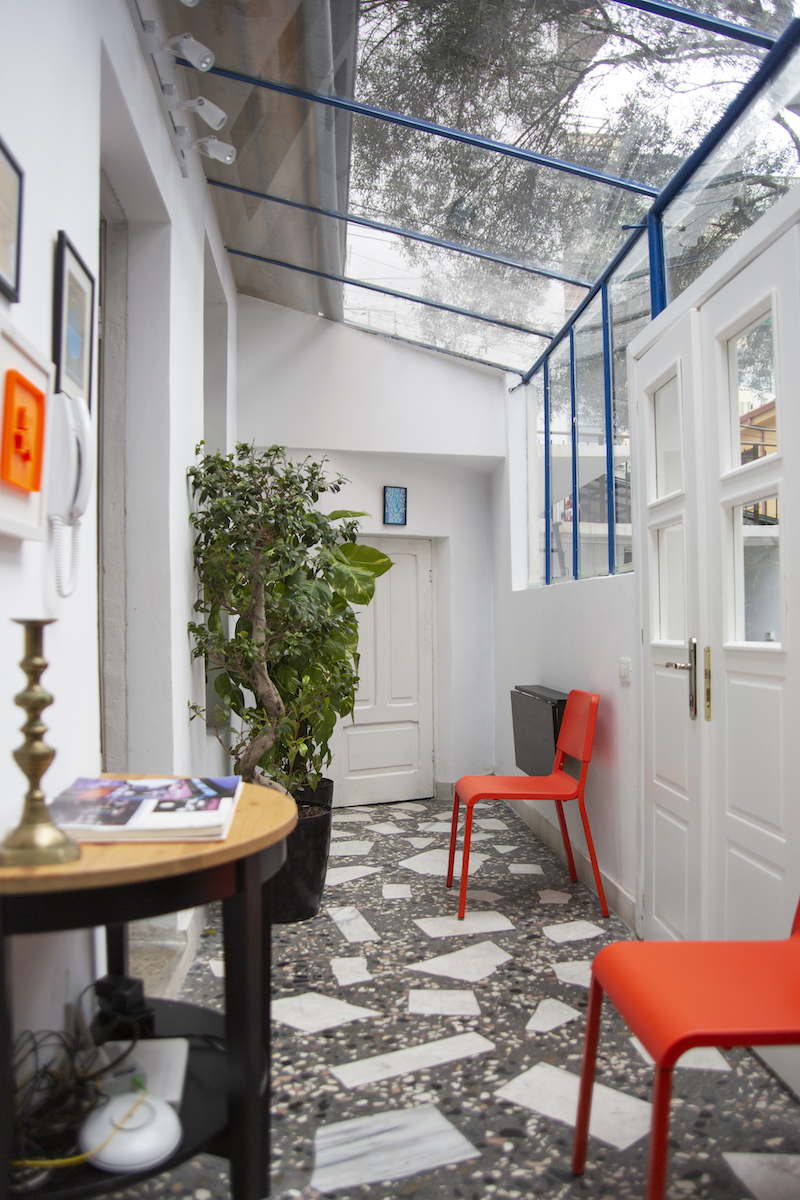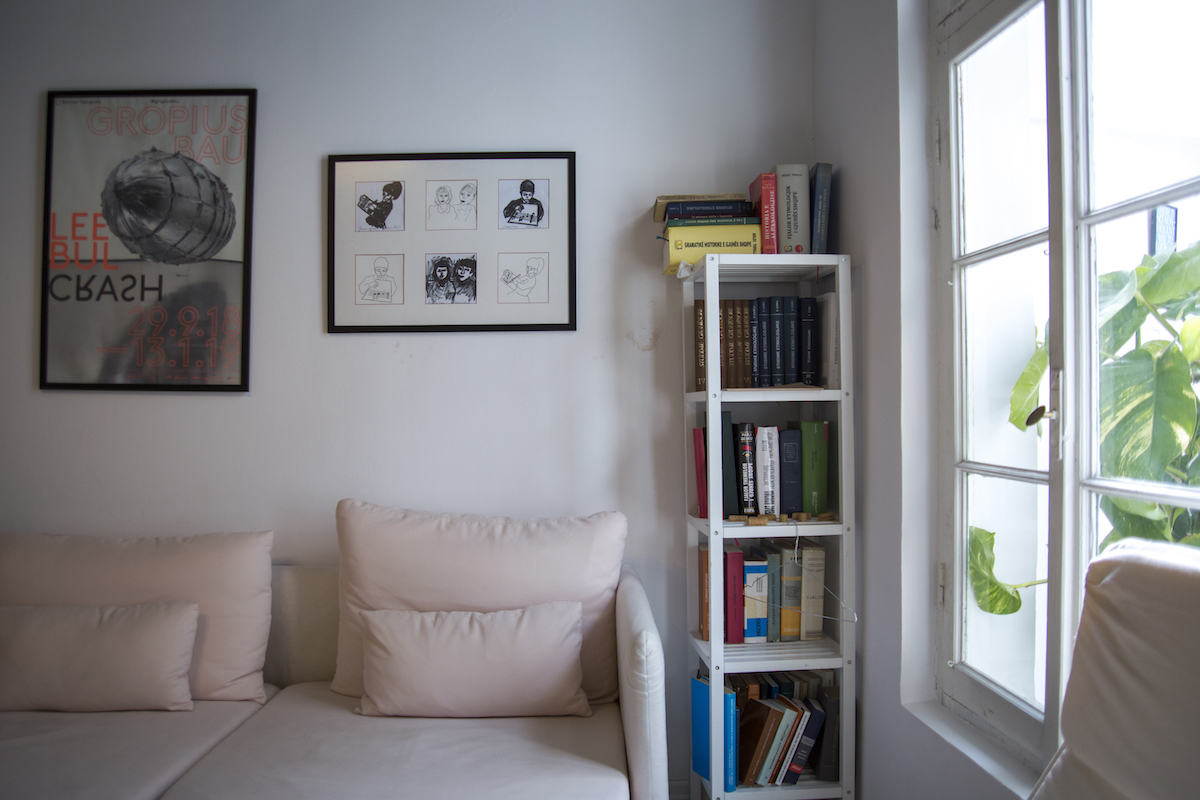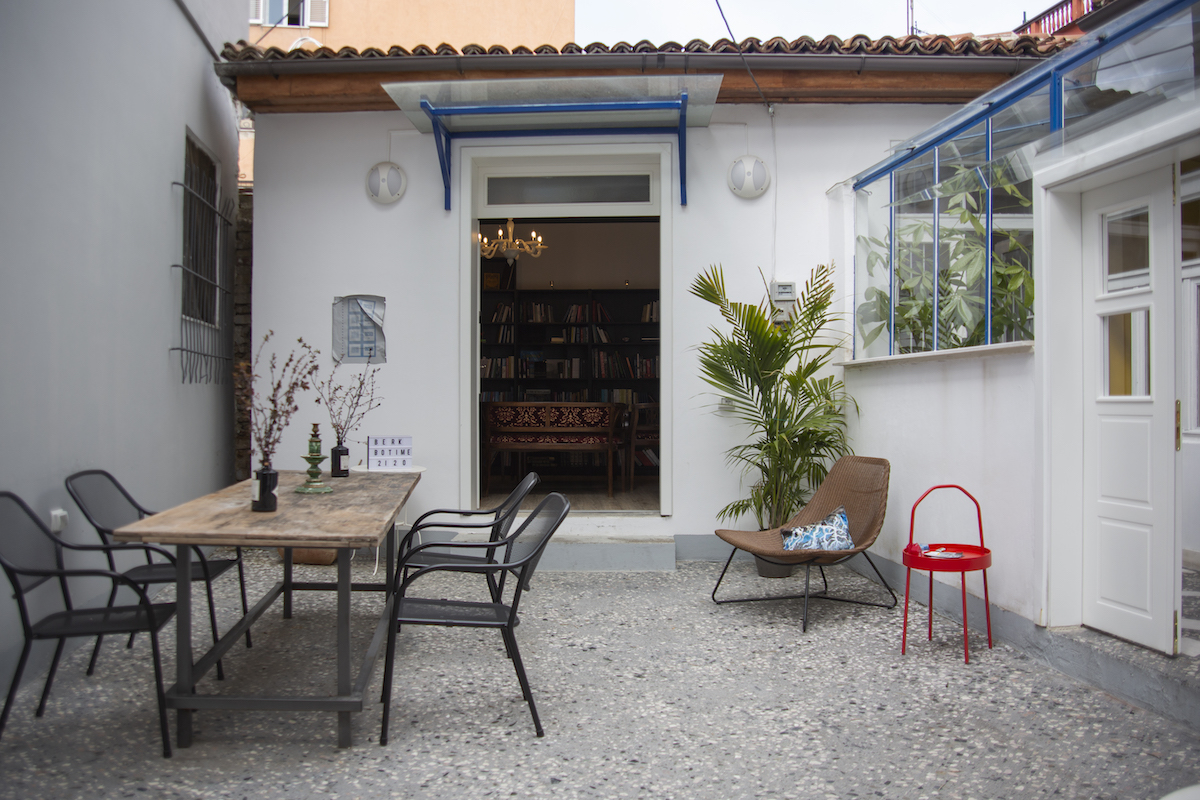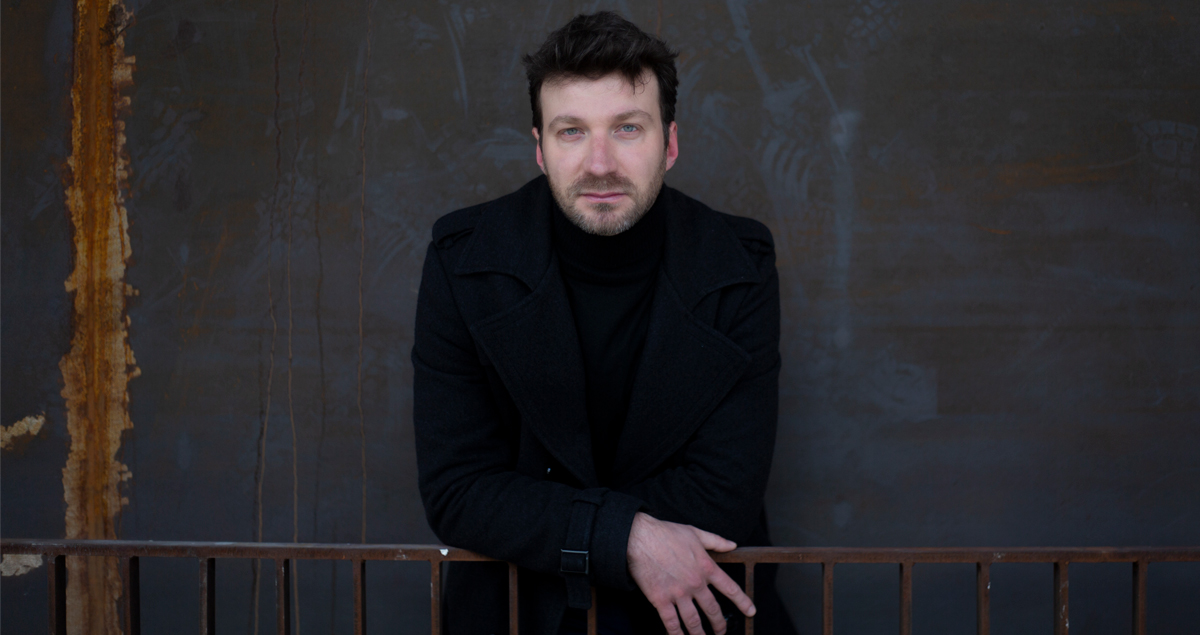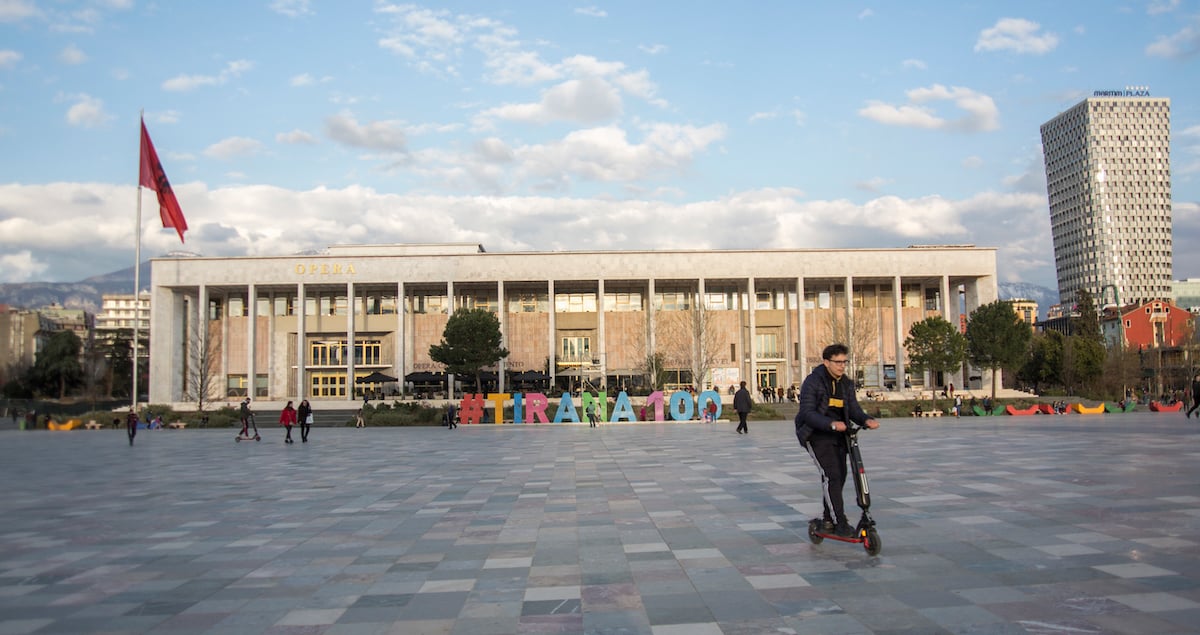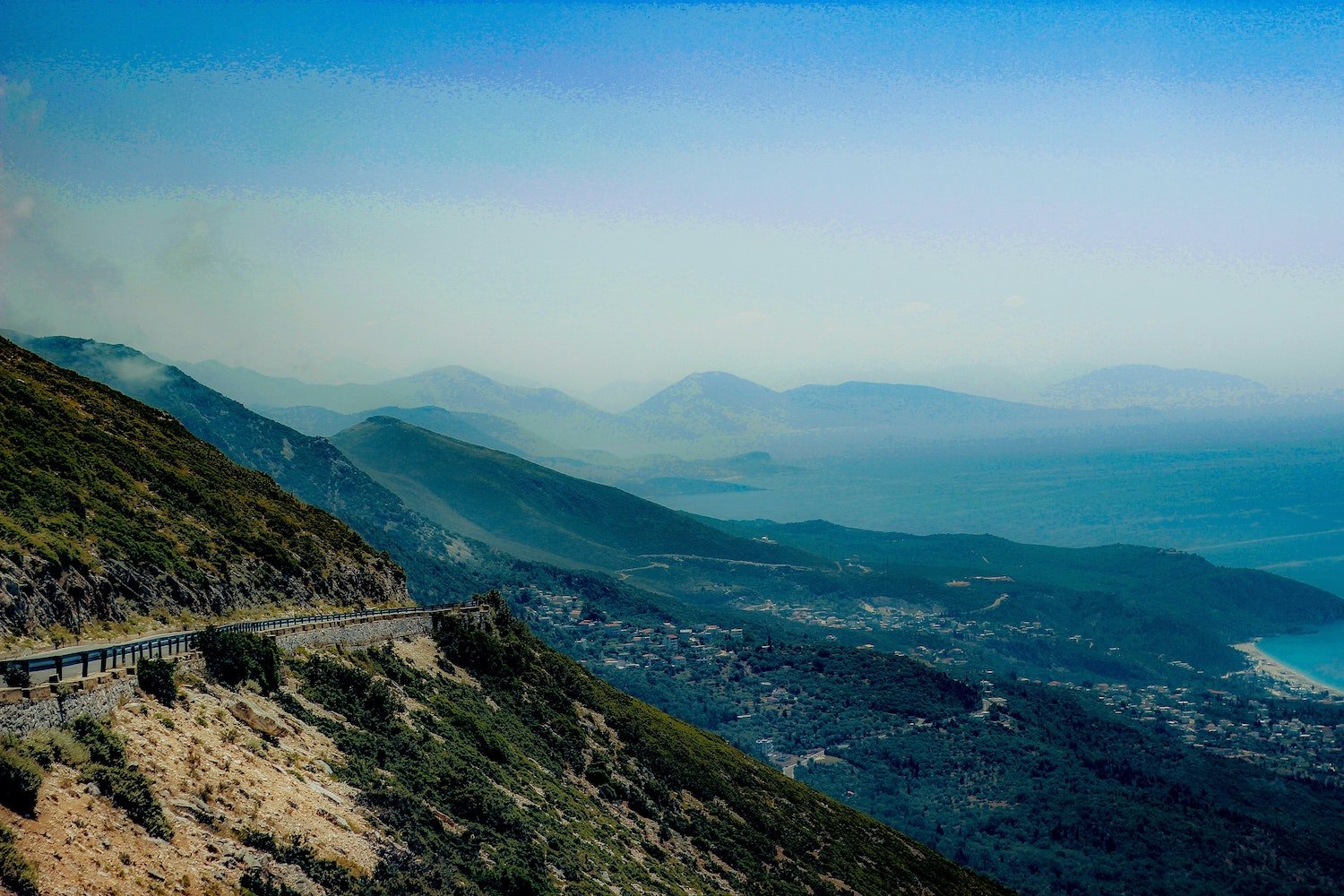The Tirana cultural hubs breaking new ground amid a city in flux
Creative cities: Tirana
This article was produced by The Calvert Journal in partnership with British Council
For several years, the soundtrack to the Albanian capital has been one of a city reinventing itself: the endless churn of concrete and earth. But as traditional spaces in the city centre have been torn down and resurrected, the city’s creatives have been forced to look elsewhere to set down roots. Many have found innovative solutions that not only question what a cultural venue can be, but the role that such spaces play in building communities and countries. The Calvert Journal spoke to four of Tirana’s best art and cultural venues on building new audiences, solidarity between different art forms, and what the future holds.
Reja
Reja, or the Cloud, began life as an art installation created by Japanese architect Sou Fujimoto. Designed for London’s Serpentine Gallery in 2013, the intricate lattice of white steel poles appeared as the annual summer pavilion in Hyde Park before travelling across Europe. Finally, it settled in Tirana. Today, the landmark can be found close to Albania’s National Gallery of Arts, but the Cloud remains an art venue and space in its own right.
“Reja is quite unique,” says artist and curator Edit Pula, who runs Reja’s Cloud Festival. She’s also a cultural advisor to the Mayor of Tirana. “In London, it stayed for three months: it has been here for five years.” Reja is an open space, which means that it’s accessible to members of the public for 24 hours a day — allowing the city to form its own special bond with the artwork. “There’s the activities that we organise, but there’s also a great deal of self-organised events, where people are taking their own initiative,” says Pula. “Students come here to rehearse, kids come here to play, people are here for games of chess: I love that the citizens of Tirana have taken charge, and we let them.”
That spirit of openness extends to the space’s flagship Cloud Festival, a free programme of cutting-edge, experimental performance, art, and dance — two art forms with little local presence — which are mixed with traditional Albanian music, blending two very different worlds.
“It’s all about building new audiences,” says Pula, “and in an urban space, that audience is often just passing through.” It’s an event which pushes back against a legacy of more conservative, communist-era culture, where such performances were often confined to formal institutions. “What I value most is access. We don’t want to run an event for a certain group of people in mind. Otherwise there are those without the access or means who will never otherwise be introduced to these things,” says Pula. “At the Cloud Festival, people arrive two hours early and bring their own chair just to be part of the event. They want more, and they want to be involved.”
This hard work is paying off: Tirana’s art scene is rapidly growing and diversifying.
“Back in 2009, there would only be a few cultural events and you’d end up going to all of them,” says Pula. “You’d see the same faces at every gallery opening, or concert, even if it was rubbish.” Now, she says, Tirana’s cultural crowd is seeing an explosion of both quality and quantity — but it’s a change that’s rooted in attitudes, not money. “Previously, culture was undervalued by politicians,” she says. “Culture was considered a luxury. But now tourism and arts are being re-evaluated, at least in terms of local government. Yes, we now have a bigger budget, but, crucially, we have a vision. Art is being promoted as something valuable and important to the city.”
Kino
Set in a historic Italian-style villa in the heart of Tirana’s leafy Blloku district, Kino is a venue where a quiet morning coffee can quickly become an all-day affair — moving onto an evening of cocktails, followed by a night of dancing. Although primarily a bar, Kino offers a patchwork of cultural events, from movie screenings and readings in the back garden, to DJ sets inside.
“Tirana has a very energetic and talented youth. They are the real spirit of this city. We work for them. We are here to make them feel good and they give us strength, joy, and beauty in return,” says Enton Kaca, Kino’s co-owner and director. “We face a lot of difficulties on the cultural scene; strange government decisions, a lack of support, short term projects, and institutional conditions that make it difficult to make progress. But nonetheless we have these small independent art galleries, cultural venues, art organisations, movies, art events, performance artists, theatre artists, contemporary dance artists, and musicians; we have good designers, brilliant studio architects, very talented promoters.”
Kino brings this diversity into its own four walls, making the space available to rent for free for youth, arts, and cultural organisations. “Tirana is a city that’s always in transition,” says Kaca. “For a small city, Tirana has a huge range of nightlife. In the same street, you might find a rock band, a DJ, a local hip-hop star, a late night club, an Irish bar, and all of these different spaces. Some weekends are crazy; the flow of the people coming and going gives you an energy that is impossible to describe.”
Kaca says that there’s never been a better time to visit Tirana. He also can’t wait to see the city’s diversity and spirit grow. “I would love to see more independent cultural events, not just nightlife and parties,” he says. “We need more focus on diverse ideas. We need more talented young people working on their ideas, and that’s enough to make a change here in Tirana.”
Tirana Art Lab
Adela Demetja describes Tirana Art Lab as an energy. Despite being a stalwart on Tirana’s cultural scene, the group doesn’t have a dedicated space of its own. Instead it appears in venues across the capital, fostering debate, discourse, and discussion on both art and Albania’s pressing social needs.
But while today’s Tirana Art Lab remains hard to pin down physically, it grew out of a very practical need. The project itself began in 2010, as a new generation of artists came of age, but found little in the way of support for young creators. Those who wanted to share their work had to self-organise — leading Demetja and her co-founders to step into the fray. “It started as an initiative to take new and emerging artists and put them in dialogue with each other,” says Demetja. “It was a movement that very much came from within and under.”
The team uses this lack of a permanent home as an opportunity to push the boundaries of their art. “When you start doing projects that are not in a specific space, you can make changes every time you do something,” says Demetja. “You can meet a new public, new people, connect to people who wouldn’t always come into the same gallery. There’s a new approach every time. Of course it’s a little bit risky but it’s a reflection of the reality. We have to be flexible.”
More importantly, it keeps Tirana focused on its main goal — bringing people together. The focus isn’t on showing art, says Demetja, but on what happens before and after.
“At Tirana Art Lab, we have always had this critical position to politics, to the development of art itself, and about what art needs to do. It’s never just about art; it’s about discourse, and why that is important to society. It’s about community and what kind of art a community can create.”
Berk Culture Space
A love of Albanian literature stands at the heart of Berk, a cultural and co-working space just a short walk from Tirana Castle. It launched in 2020 as a publishing house dedicated to promoting Albanian writers, too often ignored by a literary scene that thrives on translated texts. Now it is also making its presence felt with reading clubs, screenings, book launches and debates in an Ottoman building that used to belong to the grandmother of founder Anna Shkreli.
“The house has a co-working area for writers, designers, social science experts, we have a large library which is accessible for free,” she says. “People don’t need to pay to work or study but they are welcome to contribute. People bring food; people donate money, they donate books. There’s a very community-based feeling.”
The Berk community values Albanian culture, and is keen to discuss ideas which have long been relegated as “unimportant” by the local community: including feminism and the environment. But Berk’s events aren’t just about inviting debate — they also hinge on building bridges.
“We want to get people together and get people inspired, so that we can reach out even further,” says Shkreli. “Albania has gone through a lot of political turmoil; it’s a politically-divided country. Only by getting together and confronting these differences can we give people a voice and create something on a personal level to help us see through each other’s eyes.”
